The scandal of the story of the adulterous woman
In a comprehensive study, I ask God to make it useful to shed light on the occurrence of distortion in a famous text in the Gospel of John,
which is the story of the adulterous woman
. First, Anba Shenouda, thank you, tells us how we can judge a text as distorted? 8:1Now Jesus went to the Mount of Olives. 8:2And early in the morning he came again to the temple, and all the people came to him, and he sat down and taught them.8 :3And the scribes and Pharisees brought to him a woman caught in adultery. And when they had set her in the midst , 8:4they said to him, “Teacher, this woman was caught in adultery, in the very act. 8:5Now Moses in the law commanded us to stone such as these; what do you say?” 8:6They said this to test him, that they might have something to accuse him of. But Jesus stooped down and wrote on the ground with his finger . 8:7And when they continued asking him, he lifted up himself and said to them, “He who is without sin among you, let him be the first to throw a stone at her.” 8:8Then he stooped down again and wrote on the ground. 8:9But when they heard this, being convicted by their own conscience, they went out one by one, beginning at the oldest even to the last. 8:10up himself, and saw no one but the woman, he said to her, “Woman, where are those who accuse you? Has no one condemned you?” 8:11And she said, “No one, Lord.” And Jesus said to her, “Neither do I condemn you. Go, and sin no more.” Papyrus 66 is the oldest papyrus of the Gospel of John and dates back to the second, meaning that the story was not present in the Gospel of John in the second century AD.The first and second lines of the Gospel of John, chapter 7, verse 52,and in the second line specifically, there are three words at the end of the second line.Joh 7:52 ThenafterThat point referred to and before it another Three words from John 7/52 and then he started in John 8/12 directly.!!Inbluescriptas follows:Joh8:12ἐν τῇof, which is papyrus 66 (p66). We will continue in the rest of the manuscripts. The story of the adulterous woman is not found in papyrus 75. The story of the adulterous woman is not found in the Vatican manuscript .The same thing here alsoJoh 7:52the adulterous woman isfoundinthe Vatican manuscript and begins in the fourth line in the Gospel of John 8 / 12 directly Joh 8:12ὐτοῖς
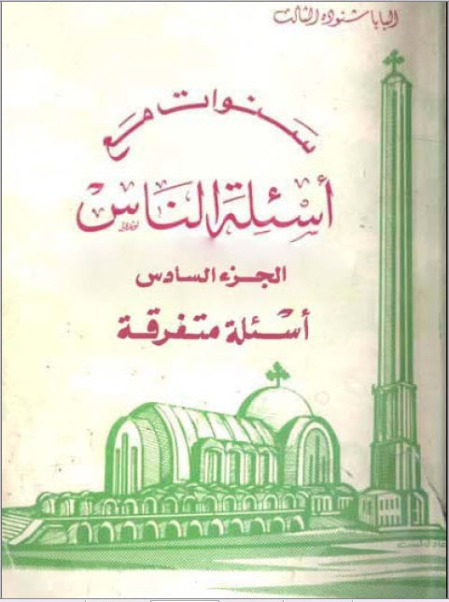





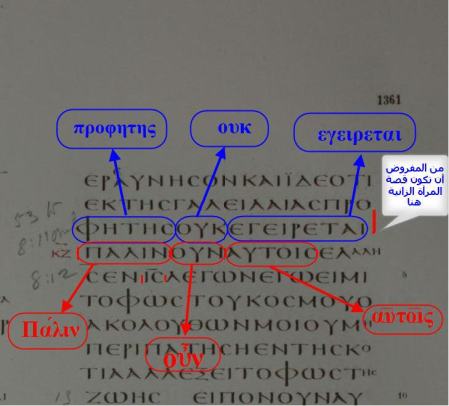
ὁ ᾿ ἐλάλησε Ιησοῦς λέγων· ἐγώ εἰmicro ἀκολουθῶν ἐmicro φῶς τῆς
Also, the story is not found in the Sinaiticus manuscript. Joh 7:52 Then after that the red line which We put it present and before it the last three words of John 7/52 and then it begins in John 8/12 directly .!! In blue script as follows: Joh 8:12 ἐν τῇ σκοτίᾳ, ἀλλ᾿ ἕξει τὸ φῶς τῆς Also not found in the Washington Manuscript (fifth century) Joh 7:52 απεκριθησαν και ειπαν μη και συ εκ της γαλιλαιας ει ερευνησον και ιδε οτι εκ εκ γαλιλαιας προφητης - ουκ - εγειρεται The story of the adulterous woman is not found in the Washingtonian manuscript and begins in the line immediately following it in the Gospel of John 8/12 Joh 8:12 Πάλιν οὖν ὐτοῖς ὁ ᾿ ἐλάλησε Ιησοῦς λέγων· ἐγώ εἰmicro ἀκολουθῶν God willing, God willing .





The Greek New Testament — non-polytonic
Greek New Testament
This edition reproduces the Greek #### of Nestle-Aland in its 26th edition, and also in its 27th edition which is in the final stages of preparation and offers the same ### #unchanged.
Bold face type is used to identify direct quotes from the Old Testament. The punctuation essentially agrees with that of the Nestle-Aland 26th and 27th editions, with the exception of certain small differences. Such differences generally have no bearing on the division of the ####.
[ ] Brackets in the #### indicate that the enclosed word, words, or parts of words may be regarded as part of the ####, but that in the present state of New Testament ####ual scholarship this cannot be taken as completely certain.
[[ ]] Double brackets in the #### indicate that the enclosed passages, which are usually rather extensive, are known not to be a part of the original ####, but an addition at a very early stage of the tradition They are included with the #### in this way because of their antiquity and the position they have traditionally enjoyed in the church (eg, Jn 7.53–8.11).
http://khazarzar.skeptik.net/biblia/gnt/ u/index.htm
The translation of the above words
The introduction explains that the subject in double brackets is generally known not to be part of the original text , but it was taken at a very early stage and has always played a distinguished role in the history of the church.
Then it mentions an example of that text under discussion itself, i.e. John. 7:53 to 8:11
English Standard Version
The earliest manuscripts do not include 7:53–8:11 .]
The Woman Caught in Adultery
53[[They each went to his own house,
John 8
1but Jesus went to the Mount of Olives. 2 Early in the morning he came again to the temple. All the people came to him, and he sat down and taught them. 3The scribes and the Pharisees brought a woman who had been caught in adultery, and placed her in the midst. 4They said to him, “Teacher, this woman has been caught in the act of adultery. 5Now in the Law Moses commanded us to stone such women. So what do you say?" 6This they said to test him, that they might have some charge to bring against him. Jesus bent down and wrote with his finger on the ground. 7And as they continued to ask him, he stood up and said to them, “Let him who is without sin among you be the first to throw a stone at her.” 8And once more he bent down and wrote on the ground. 9But when they heard it, they went away one by one, beginning with the older ones, and Jesus was left alone with the woman standing before him. 10Jesus stood up and said to her , "Woman, where are they? Has no one condemned you?" 11She said, "No one, Lord." And Jesus said, "Neither do I condemn you; go, and from now on sin no more."]]
The text Between brackets, with an explanation that the text is not found in the oldest manuscripts and is an intrusive text because it is placed between brackets
http://www.biblegateway.com/passage/...+8&version=ESV
Common English Bible Critical
editions of the Gk New Testament do not contain 7:53-8:11
.Contemporary English Version John 8:11 don't sin anymore : Verses 1-11 are not in some manuscripts. In other manuscripts these verses are placed after 7.36 or after 21.25 or after Luke 21.38, with some differences in
the story http://www.biblegateway.com/passage/...fen-CEV-22977b Good News Translation John 8:11 Many manuscripts and early translations do not have this passage (8.1-11); others have it after Jn 21.24; others have it after Lk 21.38; one manuscript has it after Jn 7.36 Many manuscripts and early translations do not contain the text and others place it elsewhere in John and Luke http://www.biblegateway.com/passage/...n8&version=GNT Holman Christian Standard Bible Text in brackets and notes that it is an omitted text John 8:11 Other mss omit bracketed http://www.biblegateway.com/passage/?search=John8&version=HCSB#fen-HCSB-26563b New American Standard Bible Text in brackets http://www.biblegateway.com/passage/...8&version=NASB New Century Version Text in brackets and notes that some of the earliest surviving Greek copies do not contain the story http://www.biblegateway.com/passage/...+7&version=NCV New International Version The text is in parentheses and he comments that the earliest manuscripts and many other ancient witnesses do not have John 7:53—8:11. [The earliest manuscripts and many other ancient witnesses do not have John 7 :53—8:11.] http://www.biblegateway.com/passage/...ersion=NIV1984 New King James Version John 7:53 The words And everyone through sin no more (8:11) are bracketed by NU- as not original. They are present in over 900 manuscripts.
The text is in brackets and is not an original text and is found in over 900 manuscripts (all of them forged)
http://www.biblegateway.com/passage/?search=John+7&version=NKJV
http://www.biblegateway.com/passage/...7&version=NKJV
New Living Translation
[ The most ancient Greek manuscripts do not include John 7:53–8:11. ]
The text in brackets and the comment that the oldest Greek manuscripts do not contain the story
http://www.biblegateway.com/passage/...07&version=NLT
Today's New International Version
[ The earliest manuscripts and many other ancient witnesses do not have John 7:53—8:11.]
The text in brackets and the comment that the oldest manuscripts and ancient witnesses do not contain the text
http://www.biblegateway.com/passage/...7&version=TNIV
first surviving Greek manu witness to the pericope is the Latin / Greek diglot Codex Bezae of
the fifth century.
. This story was not included in the following manuscripts:
"Papyrus 66 (second century) - Papyrus 75 (third century) - Papyrus 45 (the oldest papyrus of the Gospel of John) - Sinaiticus (fourth century) - Vaticanus (fourth century) - Alexandrian (fifth century) - Ephraimite (fifth century) - Washington manuscript (fifth century) - Sahidic Coptic - Free Coptic - Akhmemite - Armenian - Georgian - Slavic - Diatessaron - Delta - Theta - Most Syriac manuscripts - W - T - N - L - 567 - 157 - 70 - 2193 - 1253 - 33 - 0141 - 1424 - 1333 - 1241- 22 - 0211- 124 - 1242 - 1230 - 828 - 788 - 209 "
What about the manuscripts that contain the text and how they relate to the current text?
Many of the manuscripts that contain it either contain many differences in the readings, which we will explain, or delete entire parts of the paragraph, or in fact contain only one or two numbers of it, such as manuscript 047, which deletes the numbers 7:53 to 8:2. Manuscript F contains only the last number (8:11). Manuscript B contains only the paragraph until 8:6. Manuscript 0233, the scholar Robinson says, could not read the paragraph because it was damaged, and failed even by using ultraviolet rays. These manuscripts that contain the text also contain signs used to indicate that it is not original and that its authenticity is doubtful, such as manuscripts E, M, S, (between the eighth and tenth centuries AD) and manuscript Lambda (ninth century Oxford and called Chandrovianus), manuscript B (Petropolitanus, ninth century in Leningrad), Omega (ninth century And preserved in Greece) and others. And this is not all, as there are other manuscripts that actually contain the text, but in places other than its current location. Metzger says on this issue: Western church and which was subsequently incorporated into various manu s at various places. Most copyists apparently thought that it would interrupt John's narrative at least if it were inserted after 7.52 (DEFGHKMUGP 28 700 892 ). He continues his words: . Others placed it after 7.36 (ms. 225) or after 7.44 (several Georgian mss.) or after 21.25 (1 565 1076 1570 1582 armmss) or after Luke 21.38 (f13). Others put it after 7:36 (manuscript 225) or after 7:44 (many Georgian manuscripts) or after 21:25 like manuscripts 1 565 1076 1570 1582 and Armenian manuscripts or after Luke 21:38 (imagine they put it inside the text of Luke himself, have you seen this confusion) and this is in the manuscript family f13 and not in one manuscript
and I will add additional things to what Metzger mentioned, some put it at the end of the Gospel of John like some manuscripts of the manuscript family f1 and 565 and al 23 after 8:12 like al17 after 8:14 like 2691 after 8:20 like 981
Some put it at the end of the Gospel of Luke after the end of the manuscript in different ink such as 1333 which does not contain the text of the story except in this place, while the Gospel of John is devoid of it.
Another point is that there is a manuscript of the Alexandrian type dating back to the sixth and seventh centuries AD that mentions this text (with some differences in the readings) but it also mentions the source that brought it this story in the margin, saying (it was found in the Gospel of Mara, Bishop of Amed). It is likely that this Mara traveled to Alexandria in the middle of the sixth century AD with some of his books, and from a Gospel that contains this story, the copyists added it as a quote from it to this manuscript in the late sixth and early seventh centuries to be the first insertion of the story into the Alexandrian text (the talk is about Bart Ehrman, a student of Metzger and one of the most famous contemporary manuscript scholars now, in his commentary on the subject). The story is not found in the Vatican manuscript or the Alexandrian manuscript, as I explained at the beginning of the subject.
Jamieson et al, "The New Commentary on the Whole Bible" , Tyndale, Wheaton IL (1990), pp. 247-248
The Five Gospels
There is general agreement that the verses from John 7:53 to John 8:11 were not written by the author or authors who wrote the rest of the gospel. It was probably based on a story about the life of Jesus that had been often told, and was passed orally down through the centuries. Copyists then inserted it into various gospels. There is little consensus as to exactly when the forgery was inserted
The story of the adulterous woman was a floating or orphan story and it is certainly not part of the original text of the Gospel of John, but it is nevertheless a tradition that is told...
There is general agreement that the verses from John 7:53 to John 8:11 were not written by the author or authors of the rest of the Gospel of John. They are probably based on a story that was told orally about the life of Christ and was circulated over the centuries and added by copyists to different Gospels. There is some consensus about when this forgery was introduced
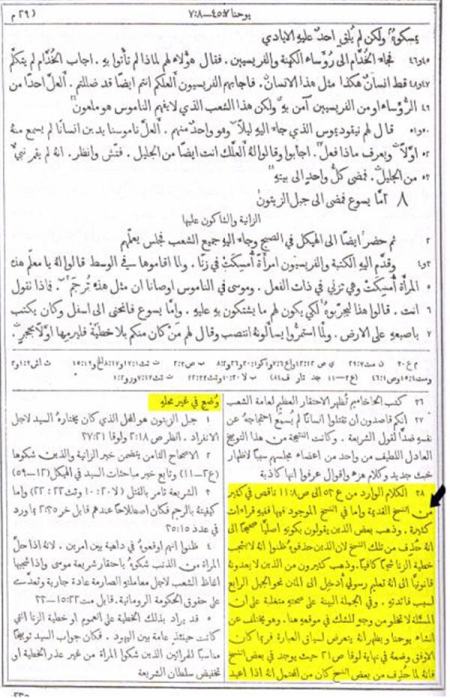
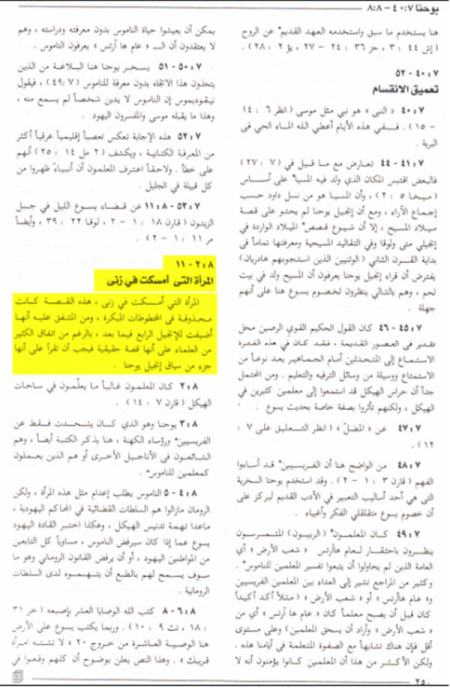

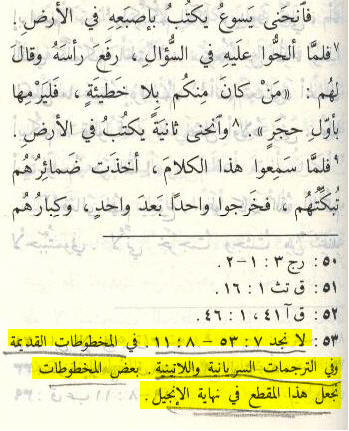



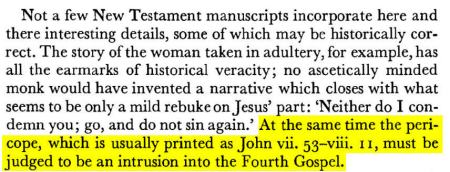


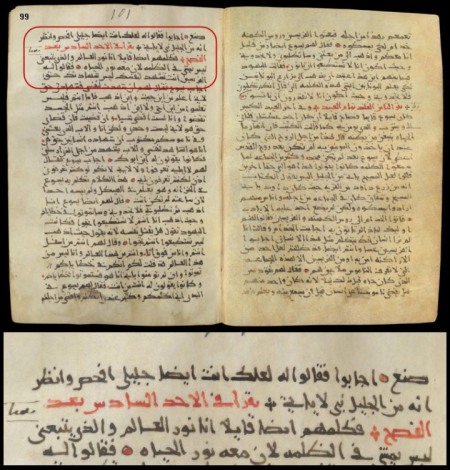

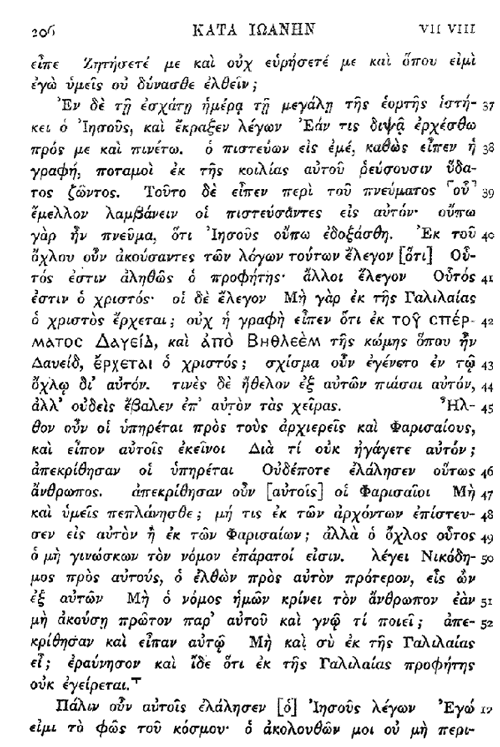
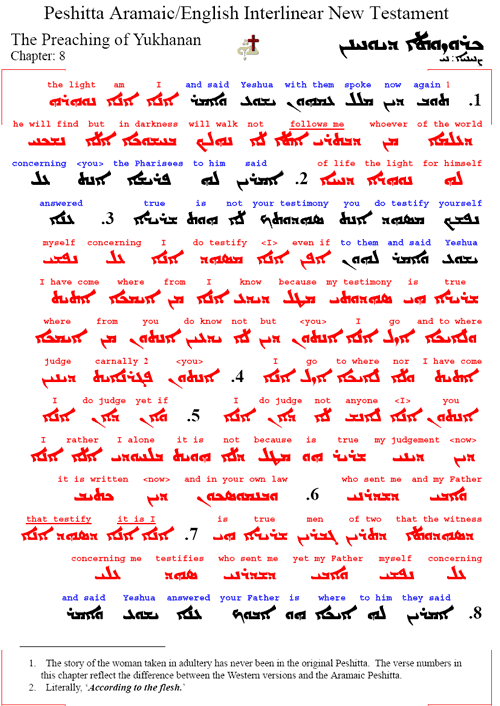



Comments
Post a Comment